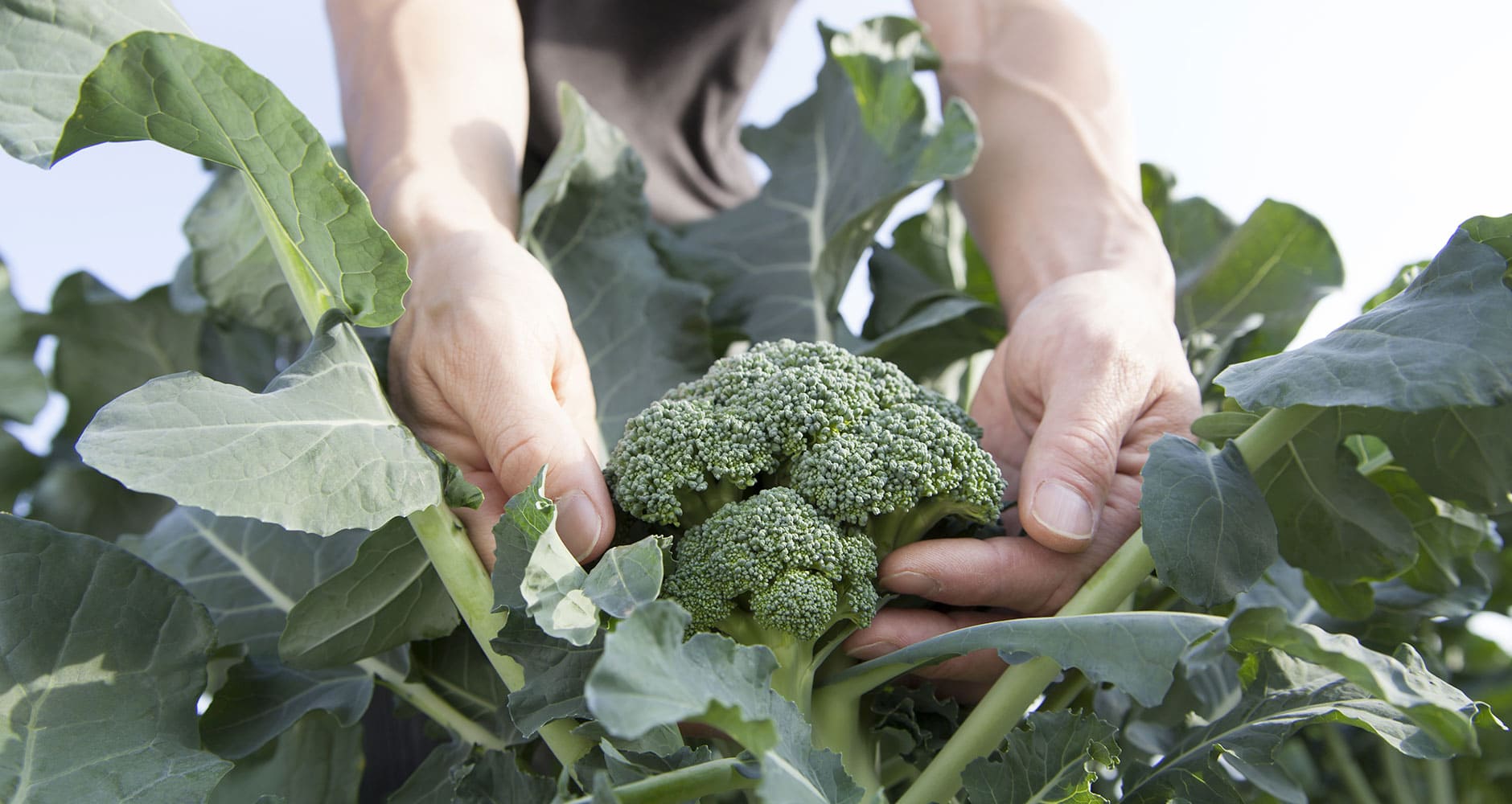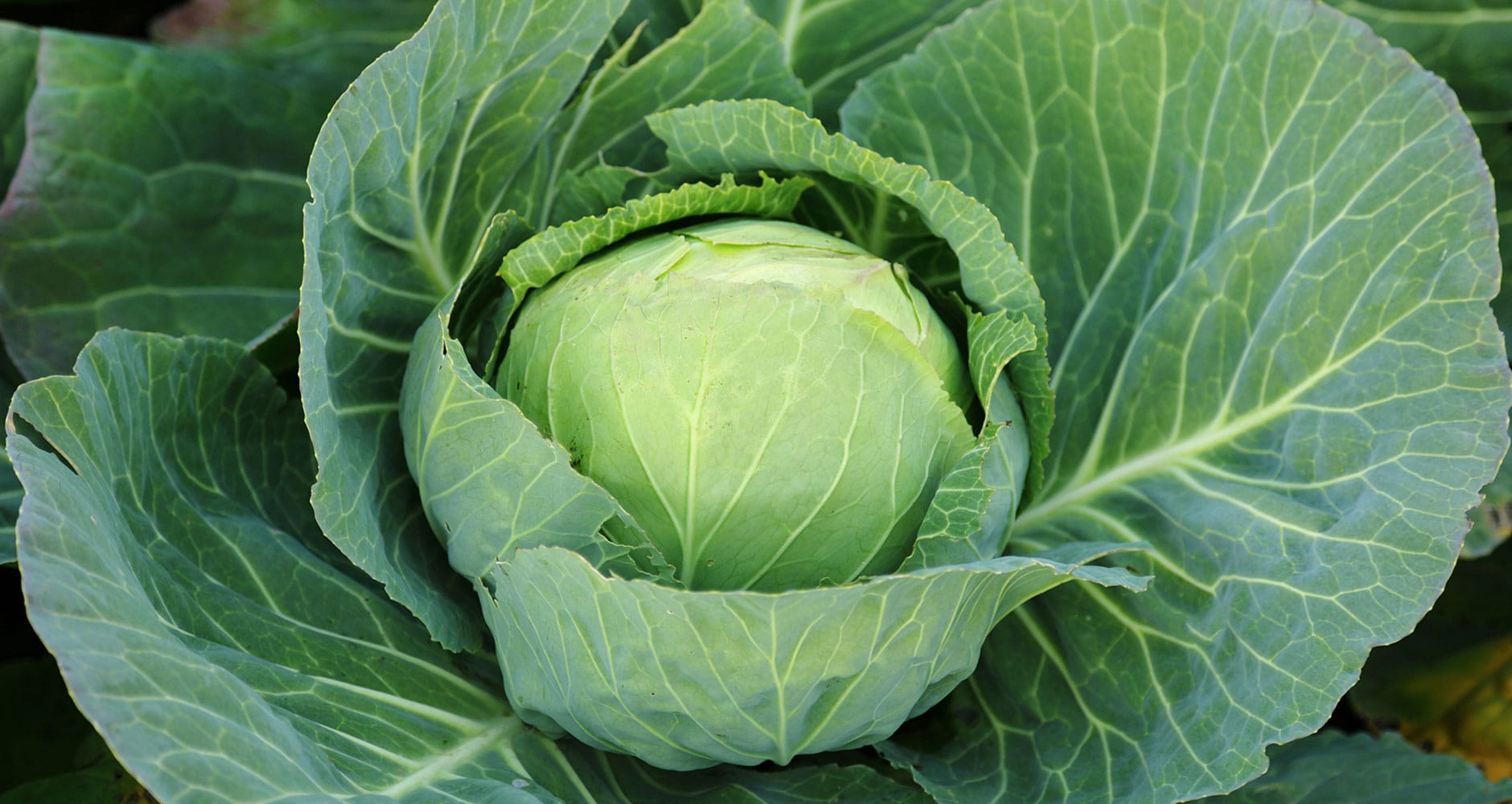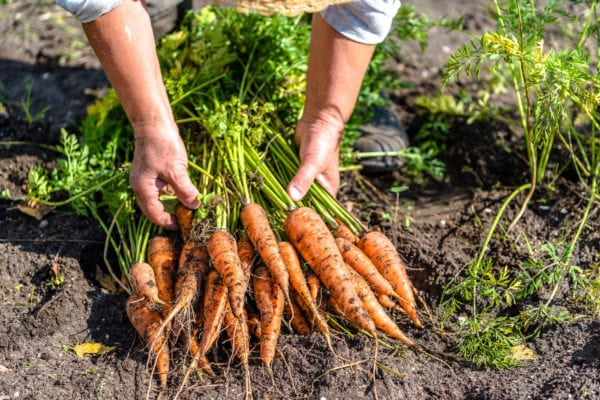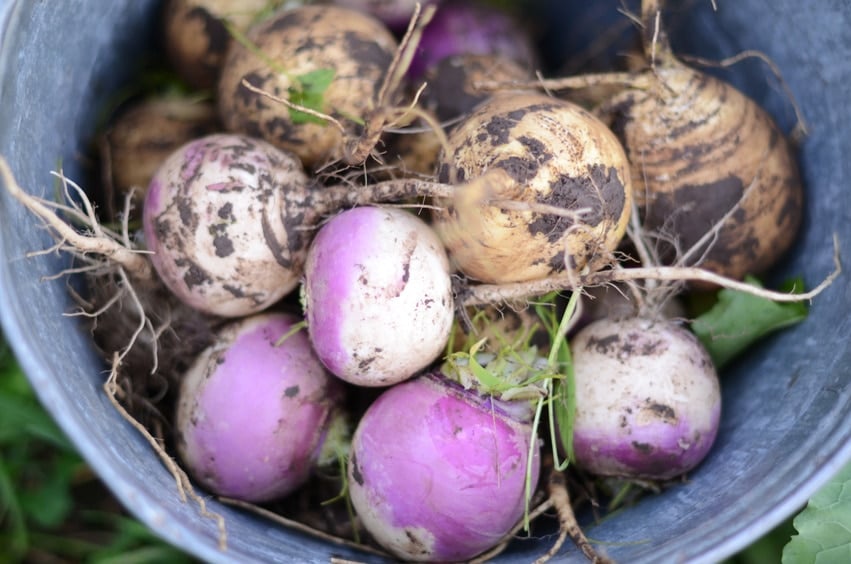Plant These Veggies For A Fall Garden!
Here's a list of veggies to start now for an abundant fall harvest!

As the summer produce withers on the vine, it’s time to sow the seeds for a fall and early winter harvest. If you didn’t get a chance to grow a vegetable garden in the spring, consider cultivating these vegetables and flowers for a vibrant and fruitful autumn garden. Many plants thrive in the cooler temperatures of autumn, and unlike spring or early summer crops, fall vegetable gardens are less susceptible to diseases or insect infestations.
Fall Gardening Tips
- Late summer—August and September—is the best time to start a fall vegetable garden in most regions.
- Once your summer vegetables have been harvested pull up the plants and compost.
- Check the Farmers’ Almanac’s average first frost dates for your state.
- Sow early-maturing varieties, when possible to allow plants to become well established before a frost is likely to occur.
Not enough time before first frost to plant seeds in your area? Plant transplants (young seedlings) instead, available at most garden centers.
Beets

Plant beet seeds about 8-12 weeks before the average first fall frost date for your area. It thrives in soil with a pH 7.0 to 7.5. They prefer the sun, but can handle some shade. Plant seeds ½ inch deep, and about 2 inches apart. Keep the soil moist. Mulch and water as needed. Mulch keeps the soil cool, yielding sweeter roots. Beets do best in cool weather—not only can they tolerate a frost, but frost actually helps improve the flavor.
Bok Choy (Chinese Cabbage)

Bok choy, sometimes seen as “siu bak choy,” translates from Chinese to “small white vegetable” (not to be confused with dai bak choy, or big white vegetable, a.k.a., Napa cabbage) This cruciferous vegetable is a member of the Brassicaceae family is easy to grow and matures quickly in cooler weather (approximately 50 days depending on variety). Sow seeds 8 to 10 weeks before first fall frost is expected. Space about 6-7 inches apart in your garden bed. Bok choy produces a head similar to romaine lettuce. It is tender, yet crisp, and mild flavored. Harvest leaves as they become ready. Plants should have thick white stalks and dark green leaves along the top edges. Bok choy only keeps about 2 weeks in the refrigerator but for longer storage, you can prop them up in sand in a cool root cellar for up to 2 months.
Broccoli

Broccoli seeds should be planted 10 to 12 weeks before the first frost. Seeds take 1 to 2.5 weeks to sprout. Transplants can be planted several weeks later than seeds, and spaced approx. 15 inches apart in a fall garden. Mulch around the plants once they’ve grown a few inches above the soil. Mulch will help keep them cool. Broccoli matures well in cooler weather, and will tolerate a mild fall frost. Broccoli thrives when daytime temperatures are around 70˚ and nighttime temperatures reach no lower than 60˚.
Cabbage

Cabbage is a cool weather, hardy vegetable, ideal for your fall garden. Seeds can be planted typically 10 to 12 weeks before the first frost. Sow cabbage seeds in soil with a pH 7.0 to 7.5, in full sun. Plant 1/2 inch deep, spacing 1.5 feet apart, and you won’t need to thin later. Mulch plants to keep soil cool. Water plants frequently. Harvest when the heads are hard and round, and before a hard freeze. Once harvested, cabbage can be stored for 2 to 3 months at 32˚ to 40˚.
Carrots

Carrots should be planted in loose, rock-free, well-draining soil, with a pH 6 to 7. A raised bed filled with well-worked soil and compost is ideal for carrots. Sow seeds about ½ inch apart in ¾ inch deep furrows. Keep soil moist and mist with water, until seedlings appear. Moisture keeps the carrots from becoming bitter tasting. Once the plants reach 2 inches tall thin out, leaving at least 3-inches between. After thinning, mulch around the seedlings to retain moisture in the soil. Harvest as soon as the carrots are large enough to eat. When you’re ready to harvest carrots, water the ground to soften it and release the carrots easily into your hands. Instead of harvesting all the carrots at once, you can leave some in the garden bed under a thick layer of straw or other mulch. They can stay in the ground until December. The flavor of carrots improves with a hard frost. Cover them with hay to keep them warm. See more carrot harvesting tips here.
Leafy Greens

Leafy greens like lettuce, spinach, and kale grow best in the fall and can be planted before mid-September for a fall and winter harvest. Plant 8 weeks before the first frost. Sow seeds 1 inch deep and 3 inches apart. Keep the soil moist. It’s important to make sure that the temperature is not likely to go above 80 degrees after you’ve planted spinach or it won’t germinate, although certain lettuce varieties can handle it. Kale will be sweeter if grown in the fall, especially if you leave it in the ground through a light frost.
Leeks
Leeks are quite hardy, and can survive even during a winter freeze. Plant them around mid-to-late August or even into September.
Radish

Radishes are the perfect fall crop as they thrive in cool fall weather. They’re easy to grow and ripen quickly. They can be grown in most soil types, but do best in a loose, sandy loam that has a pH 5 to 7. They prefer partial shade. Typically, radishes can be planted through September or one month before first frost. Plant radish seeds ½ inch deep, spacing seeds about one-inch apart. They require moisture to germinate, so continue to water frequently, especially when hot summer weather remains. Radishes can stand a light frost. Most radish varieties are ready to harvest in less than a month.
Sugar Snap Peas/Snow Peas

Sugar snap and snow peas can also tolerate frost, though you’ll want to plant them before the soil drops below 45 degrees.
Parsnips

Parsnips can actually stay in the ground all winter, and they taste better after several frosts. Just cover with hay or mulch before the snow starts.
Turnip

Another great fall root vegetable is the turnip since it matures quickly (about 2 months) and is hardy enough to survive even in Siberia.
Flowers
Chrysanthemums

Chrysanthemums are hardy and easy-to-grow perennials. They can withstand light frosts and continue blooming with bright and cheery flowers. For optimal growth, plant them in an area where their roots have room to spread out (18-30 inches) and receive plenty of sunlight. Many mums can even survive the winter, although it is recommended to mulch them once the temperature drops.
Pansies
Pansies are annuals that bloom in the fall and even winter in warmer climates, though they won’t survive a hard frost.
If you want to attract butterflies and other insects, plant goldenrod, which (contrary to popular belief) does not cause hay fever! Their tall, spiky clusters of yellow flowers also contrast well with colorful, daisy-like blooms of asters, which will bloom through October.
Spring Bulbs

If you want to have daffodils, tulips, hyacinths, or lilies blooming in early spring, you’ll need to plan ahead and plant the bulbs in late September and October. This allows them to establish roots over the winter. It’s best to plant them when the ground has cooled, but before it freezes. This usually happens when evening temperatures are in the 40s and 50s, around the time of the first frost. You should avoid planting when the soil is too wet and warm as it may cause mildew. However, if you want to ensure you get the varieties you want, you can buy your bulbs early and store them in a cool and dark area until it’s time to plant them.

Because of variation in climates, be sure to consider the number of days required for a plant to mature and the time you have until the first frost before you start planting your fall garden. And check our Gardening Calendar, so you know which days are best to do certain tasks.
With contributions from freelance writers Kristen Hewitt and Deborah Tukua.
This article was published by the Staff at FarmersAlmanac.com. Any questions? Contact us at [email protected].













Very informative, love the Almanac